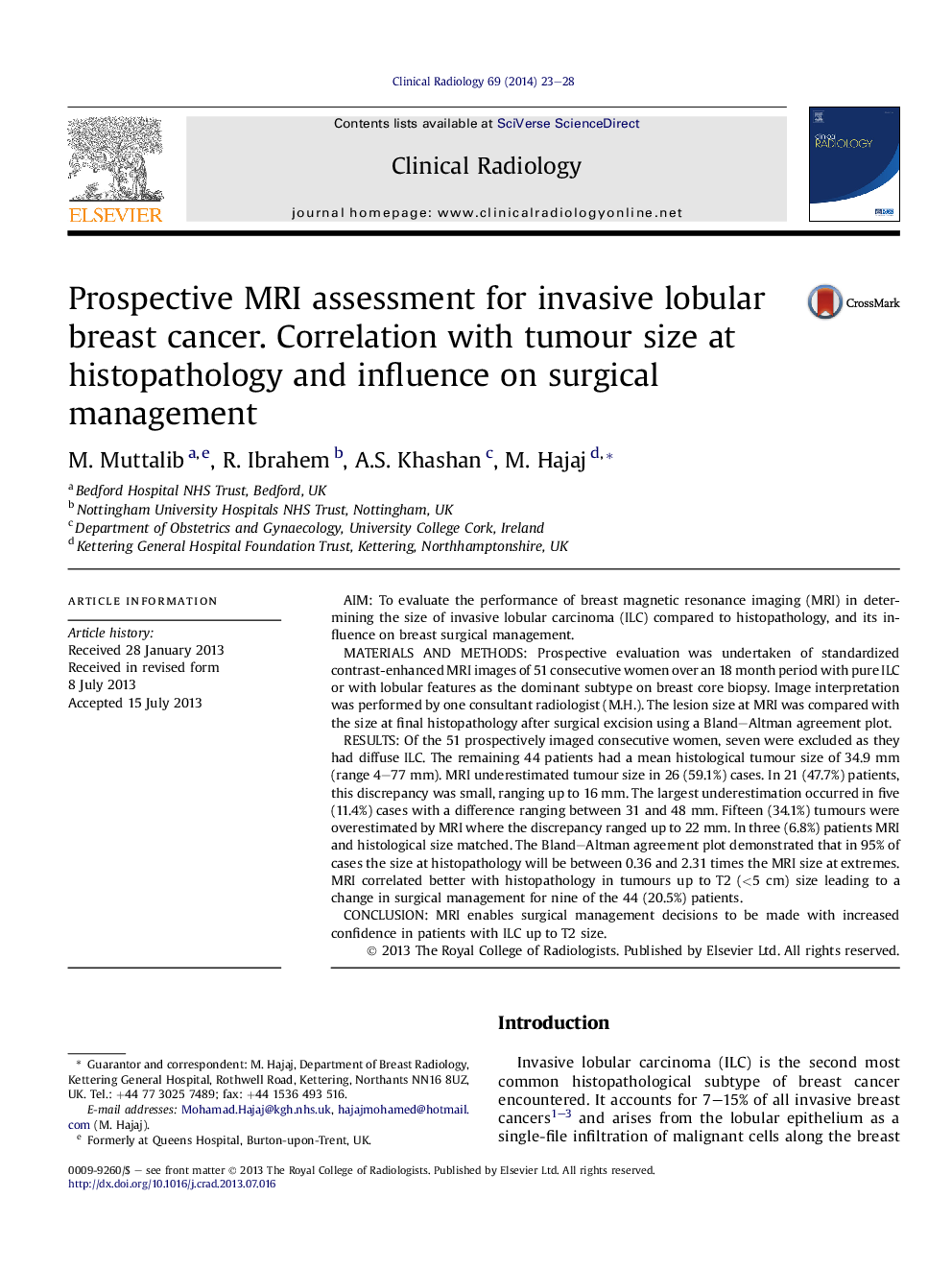| Article ID | Journal | Published Year | Pages | File Type |
|---|---|---|---|---|
| 3981706 | Clinical Radiology | 2014 | 6 Pages |
AimTo evaluate the performance of breast magnetic resonance imaging (MRI) in determining the size of invasive lobular carcinoma (ILC) compared to histopathology, and its influence on breast surgical management.Materials and methodsProspective evaluation was undertaken of standardized contrast-enhanced MRI images of 51 consecutive women over an 18 month period with pure ILC or with lobular features as the dominant subtype on breast core biopsy. Image interpretation was performed by one consultant radiologist (M.H.). The lesion size at MRI was compared with the size at final histopathology after surgical excision using a Bland–Altman agreement plot.ResultsOf the 51 prospectively imaged consecutive women, seven were excluded as they had diffuse ILC. The remaining 44 patients had a mean histological tumour size of 34.9 mm (range 4–77 mm). MRI underestimated tumour size in 26 (59.1%) cases. In 21 (47.7%) patients, this discrepancy was small, ranging up to 16 mm. The largest underestimation occurred in five (11.4%) cases with a difference ranging between 31 and 48 mm. Fifteen (34.1%) tumours were overestimated by MRI where the discrepancy ranged up to 22 mm. In three (6.8%) patients MRI and histological size matched. The Bland–Altman agreement plot demonstrated that in 95% of cases the size at histopathology will be between 0.36 and 2.31 times the MRI size at extremes. MRI correlated better with histopathology in tumours up to T2 (<5 cm) size leading to a change in surgical management for nine of the 44 (20.5%) patients.ConclusionMRI enables surgical management decisions to be made with increased confidence in patients with ILC up to T2 size.
